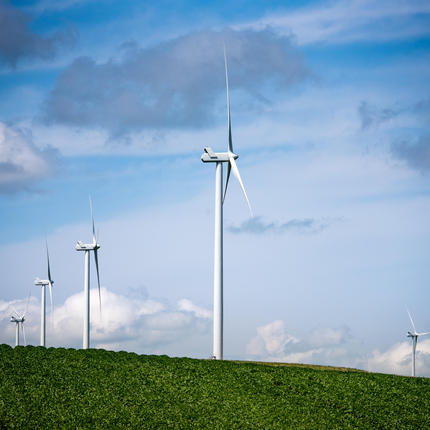By Lucas Nelsen, former staff member
In 2017, 18 percent of Minnesota’s energy needs were met by wind energy, with 3,699 megawatts installed across the state. Nearly every wind turbine contributes tax revenue to the local community where it operates, with the contributions of installed wind energy capacity totaling $12.7 million across 27 counties in 2018.
Many people wonder what their community will get out of wind development, and new tax revenue from a wind farm is one benefit that goes to an entire community—whether it supports local schools, roads, or other services. Tax revenue from wind projects in Minnesota is derived from the state’s wind energy production tax. The tax is assessed on a wind energy project based on its total capacity of energy production.
Small-scale wind energy systems with a capacity of 0.25 megawatts to 2 megawatts pay $0.12 per megawatt hour while systems with a capacity between 2 and 12 megawatts pay $0.36 per megawatt hour. The largest systems in the state, those with a capacity above 12 megawatts, pay $1.20 per megawatt hour.
As Minnesotans move toward a renewable future, increased tax revenue from wind projects will be a tool for small towns across the state. Communities can make use of new revenue generated by projects to fund critical functions like schools and emergency services without raising local taxes.
To view the fact sheet on this topic, visit cfra.org/publications/WindEnergyTaxRevenueMN.





